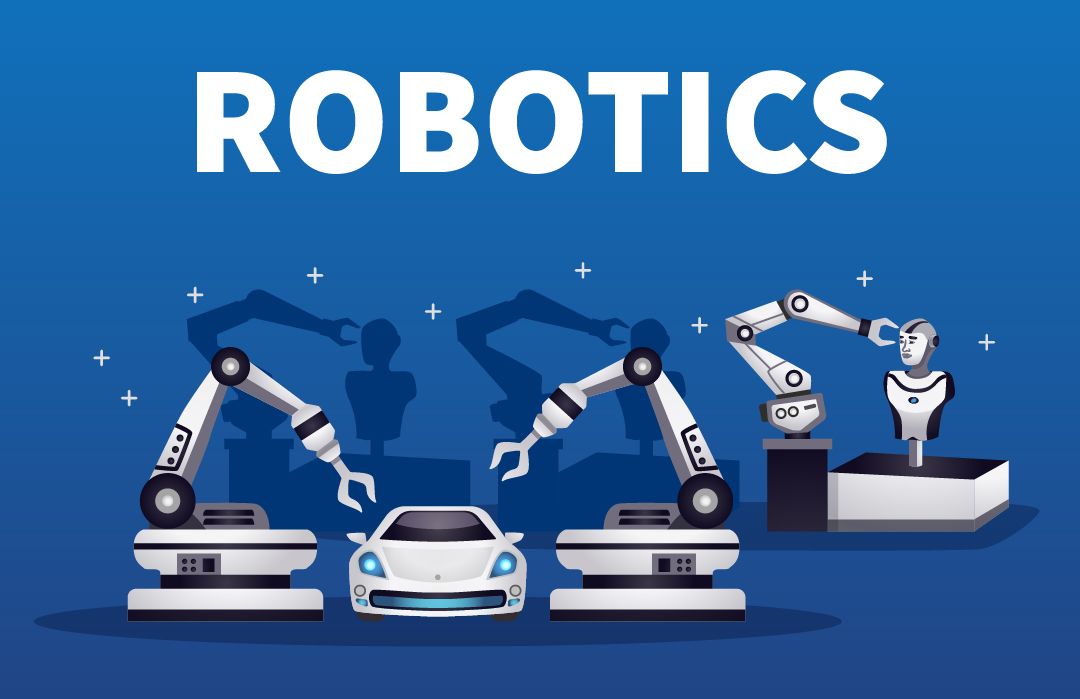Robotics is rapidly transforming industries across the globe, with applications spanning from manufacturing and healthcare to agriculture and logistics. These advancements are reshaping the way we work, live, and interact with technology. In this article, we will explore how robotics is revolutionizing various industries and the profound impact it is having on the future of work, both in terms of productivity and the workforce itself.
The Rise of Robotics in Industry
Robotics has been around for decades, but it is in recent years that the technology has made significant strides. Robots are no longer confined to large factories or research labs; they are becoming increasingly integrated into daily life and various sectors of the economy. The evolution of robotics is being driven by advancements in artificial intelligence (AI), machine learning, sensors, and materials science, allowing robots to perform tasks that were once thought to be impossible.
Key Industries Being Transformed by Robotics
- Manufacturing: The manufacturing industry has been one of the earliest adopters of robotics, and it continues to benefit from the technology. Robots in factories are now capable of performing complex tasks such as assembly, welding, painting, and packaging with incredible speed and precision. The introduction of collaborative robots (cobots), which work alongside humans, is further enhancing productivity and safety on factory floors. In addition, robots can work around the clock without the need for breaks, increasing output and reducing labor costs. Automated systems and robots also help reduce human error, improving quality control. The use of robots in manufacturing is creating more efficient production lines, reducing downtime, and accelerating product delivery to the market.
- Healthcare: Robotics is playing a major role in the healthcare industry, from surgery to patient care. Robotic surgical systems, such as the da Vinci Surgical System, allow surgeons to perform minimally invasive procedures with greater precision and control. These systems are enhancing the accuracy of surgeries, reducing recovery times for patients, and lowering the risk of complications. Robots are also being used in rehabilitation, where they assist patients with physical therapy and mobility. Robotic exoskeletons help individuals with paralysis regain the ability to walk, while robotic assistants are aiding healthcare providers in tasks like administering medication, delivering supplies, and even assisting with patient monitoring. Furthermore, robots are making their mark in elderly care. Robots designed to interact with and assist elderly patients can help with daily activities, offering companionship and ensuring their safety by monitoring vital signs and alerting caregivers to any potential health issues.
- Agriculture: The agricultural industry is embracing robotics to increase efficiency and sustainability. Robots are being used to automate tasks such as planting, watering, harvesting, and packaging crops. These machines help farmers reduce labor costs and minimize the use of pesticides by performing tasks with greater accuracy and consistency. Drones and autonomous tractors are also being deployed to monitor crop health, distribute fertilizers, and assess soil conditions. This data is used to optimize crop yields, reduce waste, and implement precision farming techniques that have a minimal environmental impact.
- Logistics and Warehousing: Robotics is reshaping logistics and warehousing operations, particularly in e-commerce and supply chain management. Automated guided vehicles (AGVs) and robotic arms are used to sort, pick, and pack items in warehouses, significantly reducing human labor and increasing the speed and accuracy of order fulfillment. Major companies like Amazon are using robots in their fulfillment centers to move products efficiently across large spaces. These robots work in tandem with human workers, assisting in tasks that are physically demanding or repetitive, while freeing up employees to focus on more complex or customer-facing tasks. The efficiency of robotic systems in logistics is leading to faster delivery times and more accurate inventory management.
- Retail: Robotics is making inroads into the retail sector, particularly in customer service and inventory management. Robots in retail environments can assist customers by guiding them through stores, providing product information, or even checking out purchases at self-checkout stations. In addition, robotic systems are being used for inventory management, scanning shelves to track product availability and automatically restocking items. This helps retailers maintain optimal inventory levels and ensures that customers always have access to the products they need.
- Construction: Robotics is beginning to revolutionize the construction industry as well. Robots can now be used for tasks such as bricklaying, concrete pouring, and even 3D printing of building materials. These robots improve efficiency, reduce labor costs, and minimize the risks associated with hazardous construction environments. For example, robotic systems that use artificial intelligence can construct buildings faster than traditional methods while also reducing waste. The use of robots in construction is particularly valuable in remote areas, where labor shortages might otherwise hinder progress.
The Impact of Robotics on the Workforce
The rise of robotics is undoubtedly transforming the workforce, both in terms of job creation and job displacement. While robots are automating many manual and repetitive tasks, they are also creating new jobs in fields such as robotics engineering, AI development, data analysis, and systems integration.
On the other hand, there are concerns about the displacement of workers, particularly in industries like manufacturing and logistics, where robots are increasingly taking over tasks traditionally performed by humans. However, this challenge can be mitigated by reskilling and upskilling programs, which enable workers to transition into roles that require more complex and creative skills that robots cannot easily replicate.
Moreover, robots are not necessarily replacing human workers but augmenting their capabilities. In many industries, robots are seen as collaborative tools that assist humans in performing tasks more effectively and efficiently, allowing employees to focus on higher-level tasks that require creativity, critical thinking, and emotional intelligence.
The Future of Robotics
Looking ahead, the future of robotics holds exciting possibilities. Advancements in AI and machine learning will continue to improve the capabilities of robots, enabling them to perform more complex tasks with greater autonomy. We may see robots becoming even more integrated into everyday life, from smart homes that use robots to assist with household chores to autonomous vehicles that transport goods and people.
As robotics technology continues to evolve, ethical considerations will become increasingly important. Issues such as the potential for job displacement, privacy concerns, and the need for regulations around autonomous machines will need to be addressed. Additionally, as robots become more capable, there will be greater emphasis on creating systems that work harmoniously with human workers and contribute to the overall well-being of society.
Conclusion
In conclusion, robotics is undeniably transforming industries across the globe. From manufacturing and healthcare to agriculture and logistics, robots are improving efficiency, reducing costs, and enhancing productivity. While the rise of robotics brings both challenges and opportunities for the workforce, the technology also holds the potential to create new roles and improve the quality of work across various sectors. The future of robotics is exciting, and with the right balance of innovation, ethical consideration, and reskilling, it promises to revolutionize the way we work and live.

